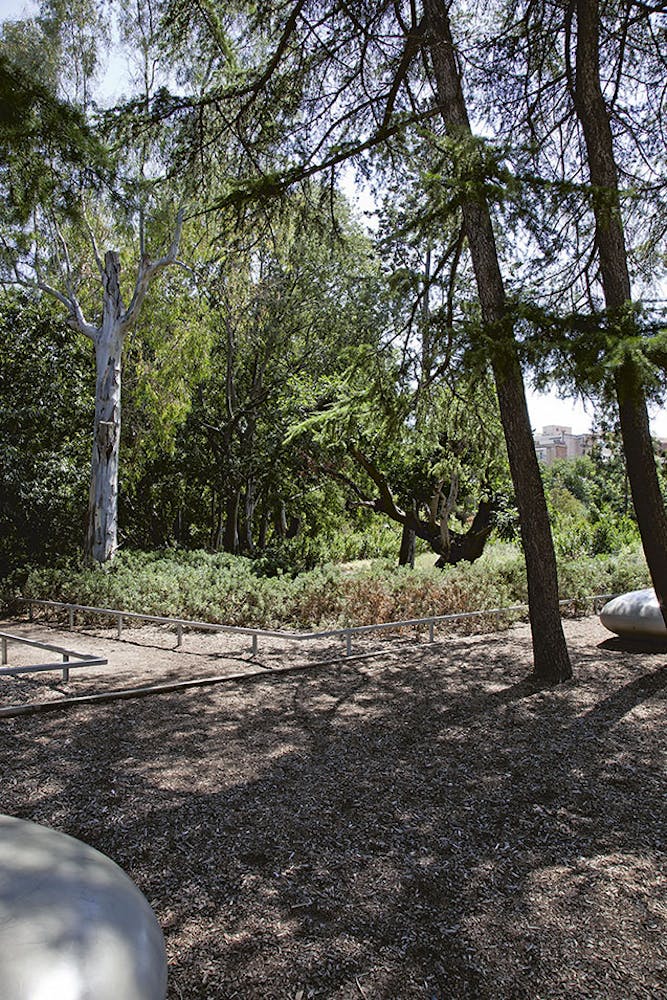Loading
[{"image":{"large":{"url":"https://images.prismic.io/surveybcn/mvp_doctor_armengol_03_494.jpg?auto=compress,format&rect=0,0,1434,955&w=1434&h=955","localUrl":"/surveyfotografic/common/images/mvp_doctor_armengol_03_494.jpg","width":1434,"height":955},"scaled":{"url":"https://images.prismic.io/surveybcn/mvp_doctor_armengol_03_494.jpg?auto=compress,format&rect=0,0,1434,955&w=1000&h=666","localUrl":"/surveyfotografic/common/images/mvp_doctor_armengol_03_494_s.jpg","width":1000,"height":666}},"gaze":{"meta":{"url":"/surveyfotografic/en/gaze/parcs"},"body":{"name":"The parks","photographer":{"name":"Milena Villalba","url":"/surveyfotografic/en/biographies#milena-villalba","colorClass":"biographies-cl-milena-villalba"}}}},{"image":{"large":{"url":"https://images.prismic.io/surveybcn/jta_jardins_del_doctor_pla_i_armengol_489.jpg?auto=compress,format&rect=0,0,1274,955&w=1274&h=955","localUrl":"/surveyfotografic/common/images/jta_jardins_del_doctor_pla_i_armengol_489.jpg","width":1274,"height":955},"scaled":{"url":"https://images.prismic.io/surveybcn/jta_jardins_del_doctor_pla_i_armengol_489.jpg?auto=compress,format&rect=0,0,1273,955&w=1000&h=750","localUrl":"/surveyfotografic/common/images/jta_jardins_del_doctor_pla_i_armengol_489_s.jpg","width":1000,"height":750}},"gaze":{"meta":{"url":"/surveyfotografic/en/gaze/aire"},"body":{"name":"The air","photographer":{"name":"Jon Tugores","url":"/surveyfotografic/en/biographies#jon-tugores","colorClass":"biographies-cl-jon-tugores"}}}},{"image":{"large":{"url":"https://images.prismic.io/surveybcn/aga_jardins_doctor_pla_armengol_483.jpg?auto=compress,format&rect=0,0,1530,764&w=1530&h=764","localUrl":"/surveyfotografic/common/images/aga_jardins_doctor_pla_armengol_483.jpg","width":1530,"height":764},"scaled":{"url":"https://images.prismic.io/surveybcn/aga_jardins_doctor_pla_armengol_483.jpg?auto=compress,format&rect=0,0,1530,763&w=1000&h=499","localUrl":"/surveyfotografic/common/images/aga_jardins_doctor_pla_armengol_483_s.jpg","width":1000,"height":499}},"gaze":{"meta":{"url":"/surveyfotografic/en/gaze/arquitectura"},"body":{"name":"The architecture","photographer":{"name":"Adrià Goula","url":"/surveyfotografic/en/biographies#adria-goula","colorClass":"biographies-cl-adria-goula"}}}},{"image":{"large":{"url":"https://images.prismic.io/surveybcn/mvp_doctor_armengol_02_493.jpg?auto=compress,format&rect=0,0,1434,955&w=1434&h=955","localUrl":"/surveyfotografic/common/images/mvp_doctor_armengol_02_493.jpg","width":1434,"height":955},"scaled":{"url":"https://images.prismic.io/surveybcn/mvp_doctor_armengol_02_493.jpg?auto=compress,format&rect=0,0,1434,955&w=1000&h=666","localUrl":"/surveyfotografic/common/images/mvp_doctor_armengol_02_493_s.jpg","width":1000,"height":666}},"gaze":{"meta":{"url":"/surveyfotografic/en/gaze/parcs"},"body":{"name":"The parks","photographer":{"name":"Milena Villalba","url":"/surveyfotografic/en/biographies#milena-villalba","colorClass":"biographies-cl-milena-villalba"}}}},{"image":{"large":{"url":"https://images.prismic.io/surveybcn/bdv_jardins_del_doctor_pla_i_armengol_488.jpg?auto=compress,format&rect=0,0,1274,955&w=1274&h=955","localUrl":"/surveyfotografic/common/images/bdv_jardins_del_doctor_pla_i_armengol_488.jpg","width":1274,"height":955},"scaled":{"url":"https://images.prismic.io/surveybcn/bdv_jardins_del_doctor_pla_i_armengol_488.jpg?auto=compress,format&rect=0,0,1273,955&w=1000&h=750","localUrl":"/surveyfotografic/common/images/bdv_jardins_del_doctor_pla_i_armengol_488_s.jpg","width":1000,"height":750}},"gaze":{"meta":{"url":"/surveyfotografic/en/gaze/vida"},"body":{"name":"The life","photographer":{"name":"Xavi Bou and Joan Diví","url":"/surveyfotografic/en/biographies#xavi-bou-i-joan-divi","colorClass":"biographies-cl-xavi-bou-i-joan-divi"}}}},{"image":{"large":{"url":"https://images.prismic.io/surveybcn/1d2d0b46-9eae-4a5b-ab40-d2659c3f6c77_IV01+AFU+JARDINS-DR-PLA-I-ARMENGOL.jpg?auto=compress,format&rect=0,0,1434,955&w=1434&h=955","localUrl":"/surveyfotografic/common/images/1d2d0b46-9eae-4a5b-ab40-d2659c3f6c77_IV01+AFU+JARDINS-DR-PLA-I-ARMENGOL.jpg","width":1434,"height":955},"scaled":{"url":"https://images.prismic.io/surveybcn/1d2d0b46-9eae-4a5b-ab40-d2659c3f6c77_IV01+AFU+JARDINS-DR-PLA-I-ARMENGOL.jpg?auto=compress,format&rect=0,0,1434,955&w=1000&h=666","localUrl":"/surveyfotografic/common/images/1d2d0b46-9eae-4a5b-ab40-d2659c3f6c77_IV01+AFU+JARDINS-DR-PLA-I-ARMENGOL_s.jpg","width":1000,"height":666}},"gaze":{"meta":{"url":"/surveyfotografic/en/gaze/usos"},"body":{"name":"The uses","photographer":{"name":"Andrés Flajszer","url":"/surveyfotografic/en/biographies#andres-flajszer","colorClass":"biographies-cl-andres-flajszer"}}}},{"image":{"large":{"url":"https://images.prismic.io/surveybcn/f96d5ef4-581f-4e43-a50a-16d0607e485c_IV01+SRV+Jardins+Dr.+Armengol.jpg?auto=compress,format&rect=0,0,637,955&w=637&h=955","localUrl":"/surveyfotografic/common/images/f96d5ef4-581f-4e43-a50a-16d0607e485c_IV01+SRV+Jardins+Dr.+Armengol.jpg","width":637,"height":955},"scaled":{"url":"https://images.prismic.io/surveybcn/f96d5ef4-581f-4e43-a50a-16d0607e485c_IV01+SRV+Jardins+Dr.+Armengol.jpg?auto=compress,format&rect=0,0,637,955&w=667&h=1000","localUrl":"/surveyfotografic/common/images/f96d5ef4-581f-4e43-a50a-16d0607e485c_IV01+SRV+Jardins+Dr.+Armengol_s.jpg","width":667,"height":1000}},"gaze":{"meta":{"url":"/surveyfotografic/en/gaze/vegetacio"},"body":{"name":"The vegetation","photographer":{"name":"Simona Rota","url":"/surveyfotografic/en/biographies#simona-rota","colorClass":"biographies-cl-simona-rota"}}}},{"image":{"large":{"url":"https://images.prismic.io/surveybcn/mvp_doctor_armengol_492.jpg?auto=compress,format&rect=0,0,1434,955&w=1434&h=955","localUrl":"/surveyfotografic/common/images/mvp_doctor_armengol_492.jpg","width":1434,"height":955},"scaled":{"url":"https://images.prismic.io/surveybcn/mvp_doctor_armengol_492.jpg?auto=compress,format&rect=0,0,1434,955&w=1000&h=666","localUrl":"/surveyfotografic/common/images/mvp_doctor_armengol_492_s.jpg","width":1000,"height":666}},"gaze":{"meta":{"url":"/surveyfotografic/en/gaze/parcs"},"body":{"name":"The parks","photographer":{"name":"Milena Villalba","url":"/surveyfotografic/en/biographies#milena-villalba","colorClass":"biographies-cl-milena-villalba"}}}},{"image":{"large":{"url":"https://images.prismic.io/surveybcn/afu_jardins_del_doctor_pla_i_armengol_482.jpg?auto=compress,format&rect=0,0,1613,1075&w=1613&h=1075","localUrl":"/surveyfotografic/common/images/afu_jardins_del_doctor_pla_i_armengol_482.jpg","width":1613,"height":1075},"scaled":{"url":"https://images.prismic.io/surveybcn/afu_jardins_del_doctor_pla_i_armengol_482.jpg?auto=compress,format&rect=0,0,1613,1074&w=1000&h=666","localUrl":"/surveyfotografic/common/images/afu_jardins_del_doctor_pla_i_armengol_482_s.jpg","width":1000,"height":666}},"gaze":{"meta":{"url":"/surveyfotografic/en/gaze/usos"},"body":{"name":"The uses","photographer":{"name":"Andrés Flajszer","url":"/surveyfotografic/en/biographies#andres-flajszer","colorClass":"biographies-cl-andres-flajszer"}}}},{"image":{"large":{"url":"https://images.prismic.io/surveybcn/bdv_jardins_del_doctor_pla_i_armengol_03_485.jpg?auto=compress,format&rect=0,0,734,978&w=734&h=978","localUrl":"/surveyfotografic/common/images/bdv_jardins_del_doctor_pla_i_armengol_03_485.jpg","width":734,"height":978},"scaled":{"url":"https://images.prismic.io/surveybcn/bdv_jardins_del_doctor_pla_i_armengol_03_485.jpg?auto=compress,format&rect=0,0,734,977&w=751&h=1000","localUrl":"/surveyfotografic/common/images/bdv_jardins_del_doctor_pla_i_armengol_03_485_s.jpg","width":751,"height":1000}},"gaze":{"meta":{"url":"/surveyfotografic/en/gaze/vida"},"body":{"name":"The life","photographer":{"name":"Xavi Bou and Joan Diví","url":"/surveyfotografic/en/biographies#xavi-bou-i-joan-divi","colorClass":"biographies-cl-xavi-bou-i-joan-divi"}}}},{"image":{"large":{"url":"https://images.prismic.io/surveybcn/bdv_jardins_del_doctor_pla_i_armengol_04_486.jpg?auto=compress,format&rect=0,0,905,1213&w=905&h=1213","localUrl":"/surveyfotografic/common/images/bdv_jardins_del_doctor_pla_i_armengol_04_486.jpg","width":905,"height":1213},"scaled":{"url":"https://images.prismic.io/surveybcn/bdv_jardins_del_doctor_pla_i_armengol_04_486.jpg?auto=compress,format&rect=0,0,905,1213&w=746&h=1000","localUrl":"/surveyfotografic/common/images/bdv_jardins_del_doctor_pla_i_armengol_04_486_s.jpg","width":746,"height":1000}},"gaze":{"meta":{"url":"/surveyfotografic/en/gaze/vida"},"body":{"name":"The life","photographer":{"name":"Xavi Bou and Joan Diví","url":"/surveyfotografic/en/biographies#xavi-bou-i-joan-divi","colorClass":"biographies-cl-xavi-bou-i-joan-divi"}}}},{"image":{"large":{"url":"https://images.prismic.io/surveybcn/bdvjardins_del_doctor_pla_i_armengol_02_487.jpg?auto=compress,format&rect=0,0,1787,1264&w=1787&h=1264","localUrl":"/surveyfotografic/common/images/bdvjardins_del_doctor_pla_i_armengol_02_487.jpg","width":1787,"height":1264},"scaled":{"url":"https://images.prismic.io/surveybcn/bdvjardins_del_doctor_pla_i_armengol_02_487.jpg?auto=compress,format&rect=0,0,1787,1263&w=1000&h=707","localUrl":"/surveyfotografic/common/images/bdvjardins_del_doctor_pla_i_armengol_02_487_s.jpg","width":1000,"height":707}},"gaze":{"meta":{"url":"/surveyfotografic/en/gaze/vida"},"body":{"name":"The life","photographer":{"name":"Xavi Bou and Joan Diví","url":"/surveyfotografic/en/biographies#xavi-bou-i-joan-divi","colorClass":"biographies-cl-xavi-bou-i-joan-divi"}}}},{"image":{"large":{"url":"https://images.prismic.io/surveybcn/bdv_jardins_del_doctor_pla_i_armengol_484.jpg?auto=compress,format&rect=0,0,1912,1288&w=1912&h=1288","localUrl":"/surveyfotografic/common/images/bdv_jardins_del_doctor_pla_i_armengol_484.jpg","width":1912,"height":1288},"scaled":{"url":"https://images.prismic.io/surveybcn/bdv_jardins_del_doctor_pla_i_armengol_484.jpg?auto=compress,format&rect=0,0,1911,1288&w=1000&h=674","localUrl":"/surveyfotografic/common/images/bdv_jardins_del_doctor_pla_i_armengol_484_s.jpg","width":1000,"height":674}},"gaze":{"meta":{"url":"/surveyfotografic/en/gaze/vida"},"body":{"name":"The life","photographer":{"name":"Xavi Bou and Joan Diví","url":"/surveyfotografic/en/biographies#xavi-bou-i-joan-divi","colorClass":"biographies-cl-xavi-bou-i-joan-divi"}}}},{"image":{"large":{"url":"https://images.prismic.io/surveybcn/mvp_jardins_del_doctor_pla_i_armengol_491.jpg?auto=compress,format&rect=0,0,1545,1030&w=1545&h=1030","localUrl":"/surveyfotografic/common/images/mvp_jardins_del_doctor_pla_i_armengol_491.jpg","width":1545,"height":1030},"scaled":{"url":"https://images.prismic.io/surveybcn/mvp_jardins_del_doctor_pla_i_armengol_491.jpg?auto=compress,format&rect=0,0,1544,1030&w=1000&h=667","localUrl":"/surveyfotografic/common/images/mvp_jardins_del_doctor_pla_i_armengol_491_s.jpg","width":1000,"height":667}},"gaze":{"meta":{"url":"/surveyfotografic/en/gaze/parcs"},"body":{"name":"The parks","photographer":{"name":"Milena Villalba","url":"/surveyfotografic/en/biographies#milena-villalba","colorClass":"biographies-cl-milena-villalba"}}}},{"image":{"large":{"url":"https://images.prismic.io/surveybcn/mvp_jardins_del_doctor_pla_i_armengol-2_490.jpg?auto=compress,format&rect=0,0,2055,1370&w=2055&h=1370","localUrl":"/surveyfotografic/common/images/mvp_jardins_del_doctor_pla_i_armengol-2_490.jpg","width":2055,"height":1370},"scaled":{"url":"https://images.prismic.io/surveybcn/mvp_jardins_del_doctor_pla_i_armengol-2_490.jpg?auto=compress,format&rect=0,0,2054,1370&w=1000&h=667","localUrl":"/surveyfotografic/common/images/mvp_jardins_del_doctor_pla_i_armengol-2_490_s.jpg","width":1000,"height":667}},"gaze":{"meta":{"url":"/surveyfotografic/en/gaze/parcs"},"body":{"name":"The parks","photographer":{"name":"Milena Villalba","url":"/surveyfotografic/en/biographies#milena-villalba","colorClass":"biographies-cl-milena-villalba"}}}},{"image":{"large":{"url":"https://images.prismic.io/surveybcn/srv_jardins_del_doctor_pla_i_armengol_495.jpg?auto=compress,format&rect=0,0,899,1348&w=899&h=1348","localUrl":"/surveyfotografic/common/images/srv_jardins_del_doctor_pla_i_armengol_495.jpg","width":899,"height":1348},"scaled":{"url":"https://images.prismic.io/surveybcn/srv_jardins_del_doctor_pla_i_armengol_495.jpg?auto=compress,format&rect=0,0,899,1348&w=667&h=1000","localUrl":"/surveyfotografic/common/images/srv_jardins_del_doctor_pla_i_armengol_495_s.jpg","width":667,"height":1000}},"gaze":{"meta":{"url":"/surveyfotografic/en/gaze/vegetacio"},"body":{"name":"The vegetation","photographer":{"name":"Simona Rota","url":"/surveyfotografic/en/biographies#simona-rota","colorClass":"biographies-cl-simona-rota"}}}},{"image":{"large":{"url":"https://images.prismic.io/surveybcn/74bb79e6-3dcf-4996-9e6a-b125a91c6a49_JTA+IV01+05+Jardins+del+Doctor+Pla+i+Armengol.jpg?auto=compress,format&rect=0,0,968,726&w=968&h=726","localUrl":"/surveyfotografic/common/images/74bb79e6-3dcf-4996-9e6a-b125a91c6a49_JTA+IV01+05+Jardins+del+Doctor+Pla+i+Armengol.jpg","width":968,"height":726},"scaled":{"url":"https://images.prismic.io/surveybcn/74bb79e6-3dcf-4996-9e6a-b125a91c6a49_JTA+IV01+05+Jardins+del+Doctor+Pla+i+Armengol.jpg?auto=compress,format&rect=0,0,968,726&w=1000&h=750","localUrl":"/surveyfotografic/common/images/74bb79e6-3dcf-4996-9e6a-b125a91c6a49_JTA+IV01+05+Jardins+del+Doctor+Pla+i+Armengol_s.jpg","width":1000,"height":750}},"gaze":{"meta":{"url":"/surveyfotografic/en/gaze/aire"},"body":{"name":"The air","photographer":{"name":"Jon Tugores","url":"/surveyfotografic/en/biographies#jon-tugores","colorClass":"biographies-cl-jon-tugores"}}}}]
{"columns":[{"type":"picture","pictures":[0],"rows":10},{"type":"picture","pictures":[1,2],"rows":5},{"type":"picture","pictures":[3,4],"rows":5},{"type":"picture","pictures":[5],"rows":10},{"type":"picture","pictures":[6],"rows":10},{"type":"picture","pictures":[7,8],"rows":5},{"type":"picture","pictures":[9],"rows":10},{"type":"picture","pictures":[10],"rows":10},{"type":"picture","pictures":[11],"rows":10},{"type":"spacer","width":0.08960238897711023},{"type":"picture","pictures":[12],"rows":6},{"type":"picture","pictures":[13,14],"rows":5},{"type":"picture","pictures":[15],"rows":10},{"type":"picture","pictures":[16],"rows":10}]}
















